14 - 29 Oct 2017
As I stood looking out the window of the residency in Trélex at the flaming leaves in early October, I knew after 17 years away from Switzerland, I too was changed. Windows offer a palimpsest of perceptions allowing for both an interior and exterior view. These worlds informed my time at Trélex. From this vantage at the foot of the Jura mountains I became a part of the pane, leaving and taking away impressions and perhaps vestiges of my predecessor’s too. These thoughts melded easily with the locus of my writing project. Just two hours east by train is the region of Valais and Château de Muzot, where the poet Rainer Maria Rilke spent the last years of his life from 1921 to 1926.
My journey to Trélex was motivated in part by a pamphlet written by a close observer of his last years. I wanted to see the home and walk the land which allowed him to pen his greatest works. It was at Muzot that Rilke completed the Duino Elegies and the Sonnets to Orpheus as well as a flurry of French poems entitled Les Fenêtres (The Windows).
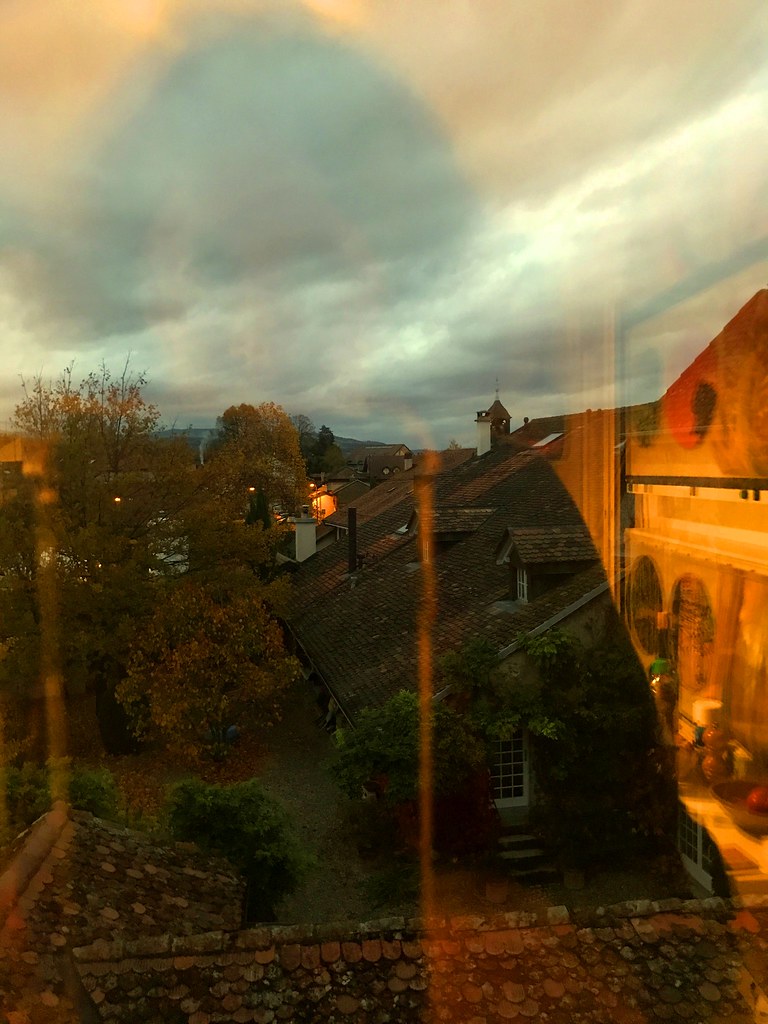 |
| Kitchen window at Trélex, October 2017 |
The Windows - IV
You, window, oh scale of waiting,
refilled so often; when one life overflows impatiently
towards another life.
You who separate and attract,
changing like the oceans—
sudden reflection, where our face
contemplates itself mingling
with what is seen on the other side;
fraction of a compromised freedom,
by the presence of risk;
trapped by whatever's in us
which evens the odds
of the loaded outside.
******
The Windows - IV
Fenêtre, toi, ô mesure d'attente,
tant de fois remplie,
quand une vie se verse et s'impatiente
vers une autre vie.
Toi qui sépares et qui attires,
changeant comme la mer,—
glace, soudain, où notre figure se mire
mêlée à ce qu'on voit à traves;
échantillon d'une liberté compromise
par la présence du sort;
prise par laquelle parmi nous s'égalise
le grand trop du dehors.
By Rainer Maria Rilke. Translation by A. Poulin.
Whatever one’s medium, many artists I encounter are familiar with Rilke’s Letters to a Young Poet as was true for Nina, the founder of Trélex and Eva, a former resident who came by for a visit. This collection of ten letters speaks to the heart of artistic struggle. It’s not only a lyrical masterwork, it holds sound reasoning on how to stay the course. Rilke guides his correspondent to trust his inner judgment, commenting that “Nobody can advise you and help you. Nobody. There is only one way—Go into yourself.”
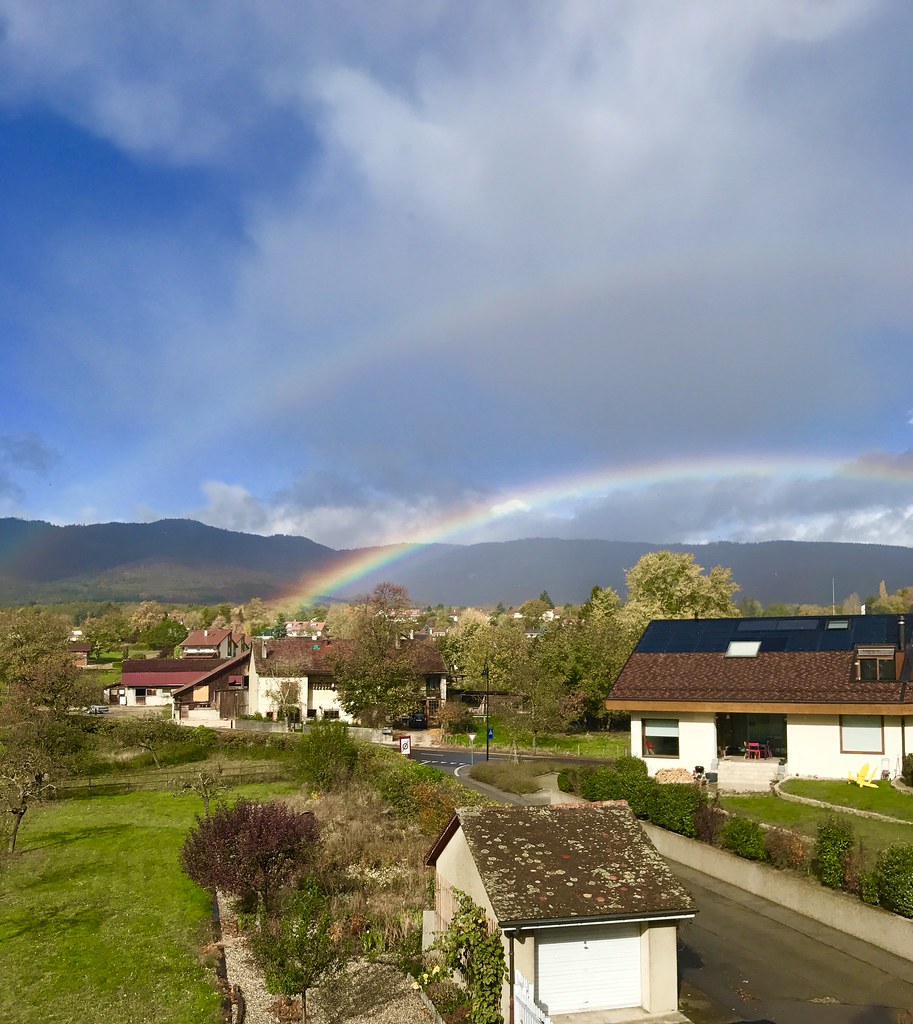 |
| Double rainbow from Trélex window of residency room. |
My return to the land of Helvetians involved a heady mix of reflections including a homecoming to a land I’d lost. Switzerland was “the one that got away.” Yes, there was a man involved over the course of three years, but it was also the country I’d fallen in love with once I’d moved beyond the initial barriers of distance and language. Even before I began writing, I longed for displacement and the chance to immerse in a completely foreign land with its challenges and victories. I loved the delicious in media res moments of being alive and present in a new world. Geneva and its grand architecture and the Vieille Ville (Geneva’s old town) an ancient maze of small streets, was a place I could plant myself for afternoons and feel the bells of the Cathedral St. Pierre ring through me. It was a meditation to walk the museum-lit streets, devoid of cars and city noises and sit in Bourg-de-Four Square listening to the Swiss-French lilt of the locals as they chatted and drank vin rouge or cappuccino. There were long walks by the Rhone and Lake Geneva and adventures navigating the pristine Swiss transportation systems. It was an awakening to a sensory existence profound with history. As someone who grew up in Chicago’s poor inner-city and later the noisy landscape of Los Angeles, coming to Geneva was like entering a Hugo novel. Not exactly Paris but aspects of polite society and formidable architecture prevailed.
Nearly two decades later the Swiss landscape was as safe and bucolic as ever. Once I’d settled in at Trélex, my first excursion was to hitch a ride with Nina to Vevey, a gorgeous lakeside town on the east side of Geneva. Nina was happy to have a poet “in her pocket” on the long drive to her bookbinder and asked if I’d read a couple of poems from Night Ladder - my first poetry collection released this summer. After sharing Picasso’s Garden and Foal, Nina spoke of the special acuity artists have which make them sensitive to everything around them. Through conversations and my observation of her art I would come to learn how much Nina’s insights go beyond her work to the art world at large and the varying mediums. It is one thing to be in an ivory tower and another to let the world in – to challenge and appreciate the ever-changing biosphere of artists who move through Trélex and help them grow.
Rilke’s intuitive and primal insights were astonishing and the compelling reasons many are drawn to his work. These faculties began early as was evidenced in his ability to shift his point of view at will. As a child, he frightened his mother one day when he shared his experience of looking through the eyes of a passing hound! Oh she didn’t like that, and he would not rely on her confidence in future!
And yet as Rilke’s long-time friend Rudolf Kassner posited, intuition is the highest rung of the imagination. It grasps the whole and the absolute, whereas perception, as a faculty of observation, takes into account only what is relative and partial. Rilke’s art is an attestation to his instinctive nature. When I lived in Geneva at the turn of the millennium I was unaware of Rilke and had only brief interactions with the subject of poetry. How could I know his words would become a central focus in my evolution as both a poet and a human being? How could I imagine I would revisit a region so close to his heart. To return to Switzerland was amongst other things, to enter a deeper relationship with Rilke and the home which would be his last.
 |
| Rilke at Muzot. |
I made two visits to Muzot from Trélex. The first in mid-October was with Eva West. Eva, a Swiss born resident now living in California met me at the residency and guided me through the journey to Sierre with great care. We had corresponded some two years prior while she worked on a translation relating to my project. She’d visited the canton of Valais a year before to see her family and to lay down the tracks, orienting us both to Rilke’s world through photos and descriptions of the region. At that time, I had no idea how I would get to Muzot or if I could ever afford the opportunity to stay nearby but things fell into place well in advance of my visit. Miraculous how a small dot on the map within arm’s reach of Muzot made my dream conceivable. The Trélex Residency made it all possible.
The train ride to the main city of Sierre with Eva was nothing less than stunning, with glances of the mysterious Chateau de Chillon on Lac Leman (Lake Geneva), another place I’d left memories – a meal of fresh bread and cheese on the jagged rocks with my then boyfriend who I’ll call “T,” complete with mist and the occasional swan.
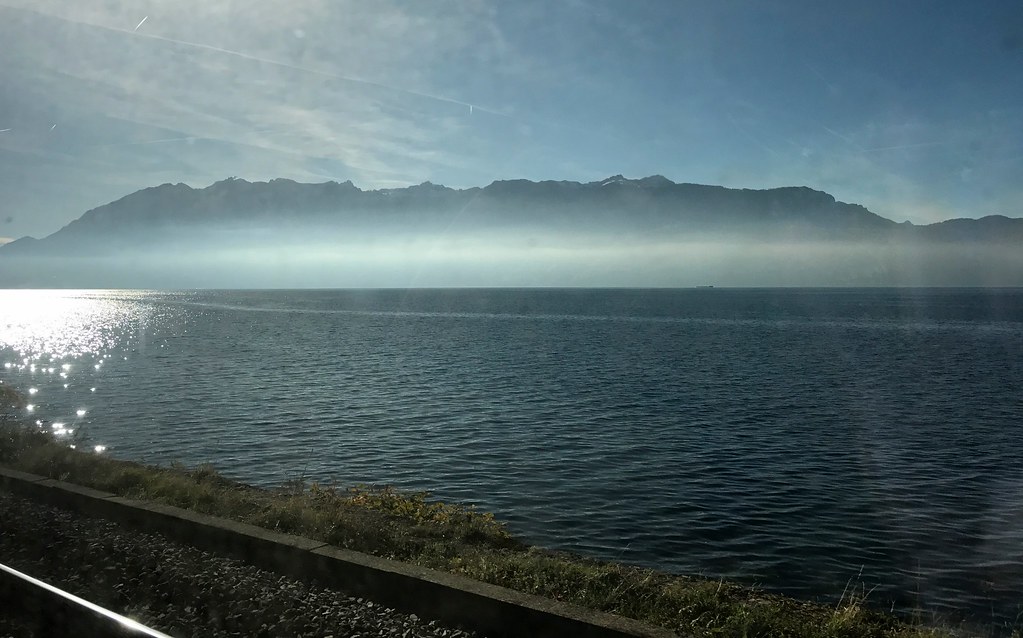 |
| On the train to Sierre. |
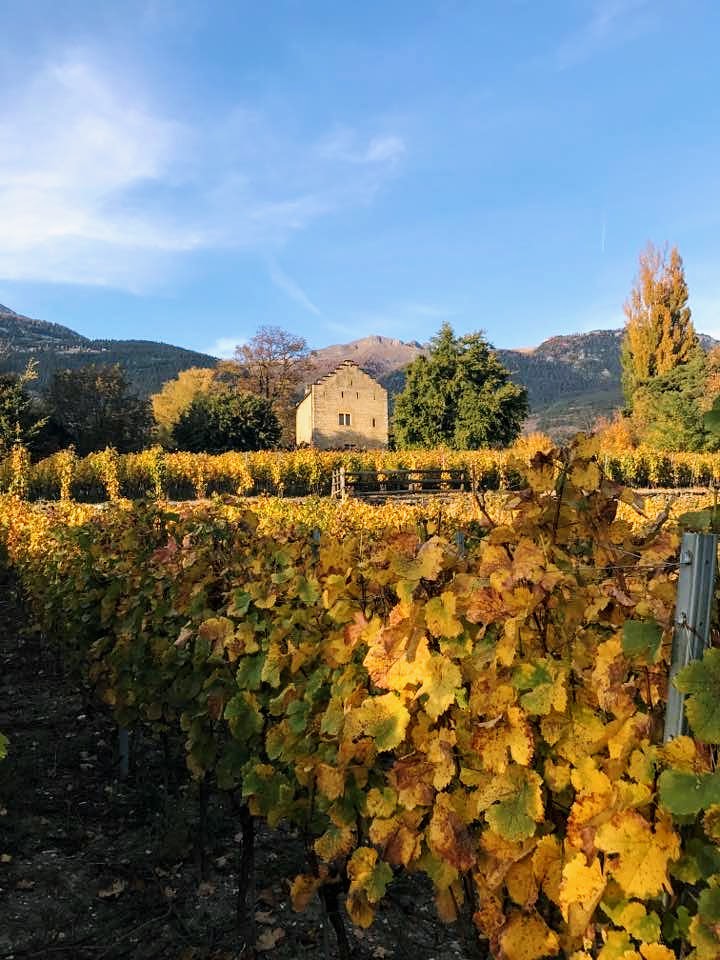 |
| Chateau Muzot |
Just across the narrow road was the small St. Anne’s Chapel with its beautiful Black Madonna and pear trees Rilke frequented during his time at Muzot. Eva and I ate the fallen fruit in silence, taking in the warmth of the sunset and the soft breeze shushing the leaves. I spent long moments in the archway of its entrance. Though St. Anne’s was closed, through the miracle of iPhone, I was able to be both inside and outside the chapel. I did not feel cheated! Today, the chapel holds a memorial service each year on December 29, the date of his passing.
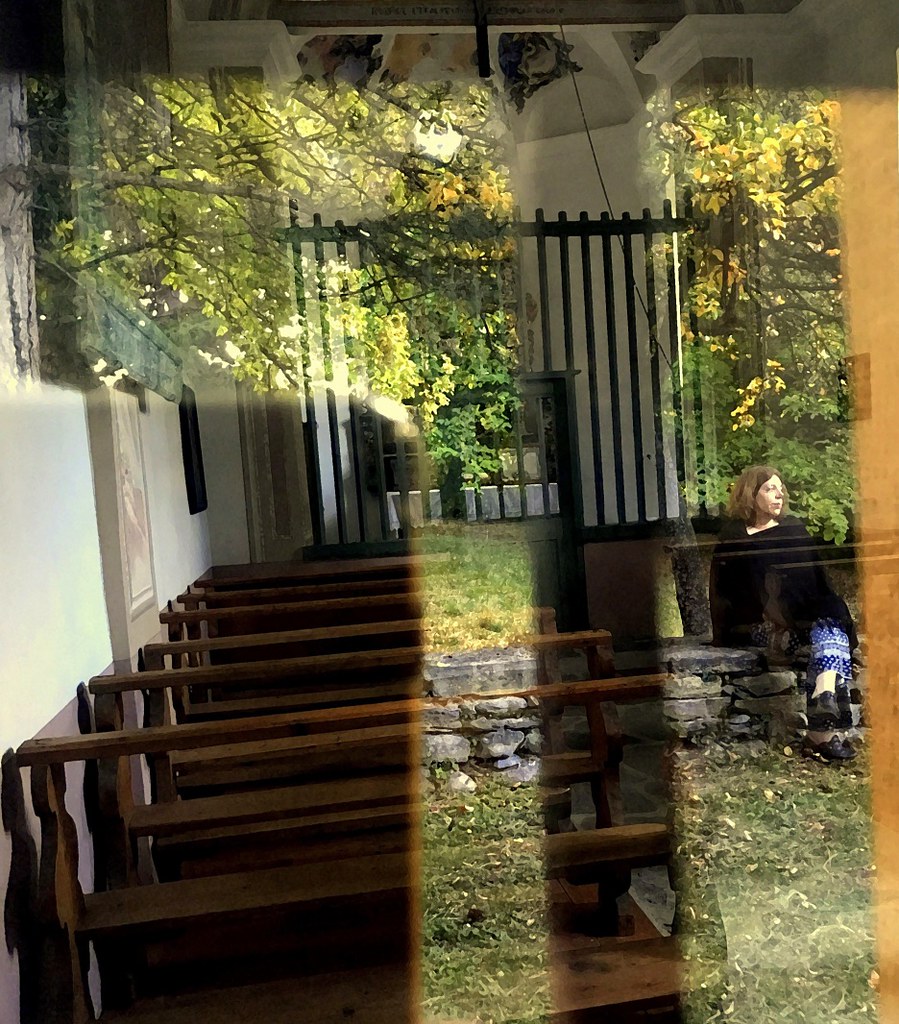 |
| At St. Anne’s Chapel, Muzot, photo by Eva West. |
Despite my disappointment at not entering Muzot, Eva and I returned to Trélex that evening with an incredible shared experience. I arrived very late to Nyon due to a stalled train (nearly unheard of in Switzerland) and took the taxi home to Trélex as the last bus had gone - overtired, overjoyed.
I had the fortune to spend the remainder of my time at Trélex with great friend, fellow poet and water colorist Lia Brooks who came from the south of England to share the experience and take part in her own journey. For Lia it was a chance to discover a new country through her three-sided spyglass – the land, its architecture and its people. More importantly Trélex was an opportunity for her to write without distraction unless one considers me a distraction which I sometimes am! We were both elated at the chance to spend time together in the Swiss countryside. Quiet but by no means inert, the land has its way of entering your blood. I sometimes felt like a cat pulled in two directions – to look out from my desk across the great property and the outlying farms and fields or outside experiencing the land – its colossal skies and cool blue mountains. I believe that’s one of the main reasons why writers need to mark out an ample period for their residency. You will want to get familiar with the surrounding village, adventure to nearby Nyon or Geneva but you will crave time without plans. You will need time to wind away from wherever you’ve come and let your mind settle on what is given to you at that moment. Trélex is the ideal place to accomplish this. There were long walks at various times of the day. Each time the sky offered its changing enigmas.
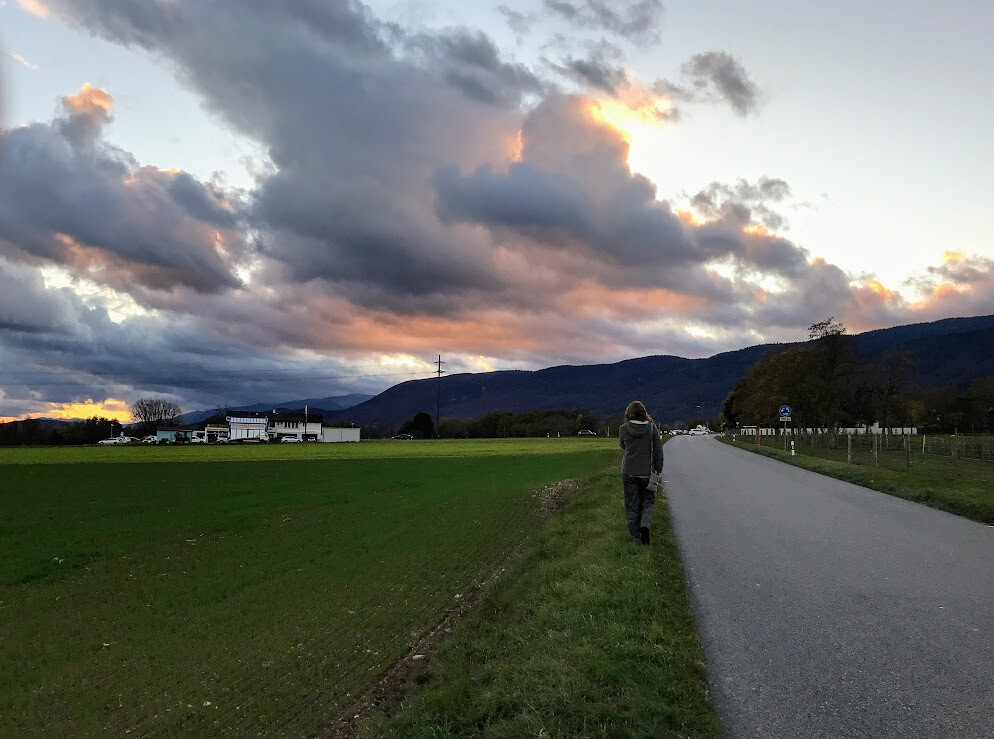 |
| Lia on the road to the café petrol. |
A visit to Geneva was on the menu. Geneva was not only the birth of my ex pat experience it was the nascence of my poetic discovery in 1999. Other than a local scribe nicknamed “Poulette” (chicken) who busked his verse on the Geneva streets, my exposure had been as most – stodgy poets and stifling verse in uninspiring classes. It wasn’t until a St. Valentine’s dinner at L’Opera Bouffe with T and his spontaneous translation of a poem by French surrealist poet, Paul Eluard that the experience came home. The owner was a devotee of verse and in an inspired gesture created a poetic menu with entrées named for that night’s enjoyment. Alongside each place setting were two poems – one from Paul Eluard and the other by Paul Valery. It was at that moment, like Neruda, poetry arrived…/without a face,/and it touched me. Though it would be a few more years before I would attempt to touch it back.
Now, returning to my old neighborhood with Lia some 17 years later, I couldn’t remember exactly which stop to depart from until suddenly my old building was in sight! We hopped off at Eaux-Vives and headed toward the apartment. It was a thrill to see nothing had changed in so long – the old Bon Vin just below the flat was still touting the best fondue in town. Reaching Rue Versonnex I no longer had the code to enter. I could only stare through the glass into the long unchanged hall, wishing to gain entry and take the lift to the third floor of that gorgeous art nouveau building that took in the generous light and city bells. Would there still be the scent of Gruyere and the clank of bottles outside our bedroom window from the glass man? Do the doves still flutter and coo in the inner courtyard below?
 |
| Hall window at 19 Rue Versonnex. |
Lia and I spent the day discovering and for me – rediscovering its secrets and joys, finishing the night with dinner at Les Armures and our newfound love – Gamay! A delicious local wine and a perfect accompaniment to poetry.
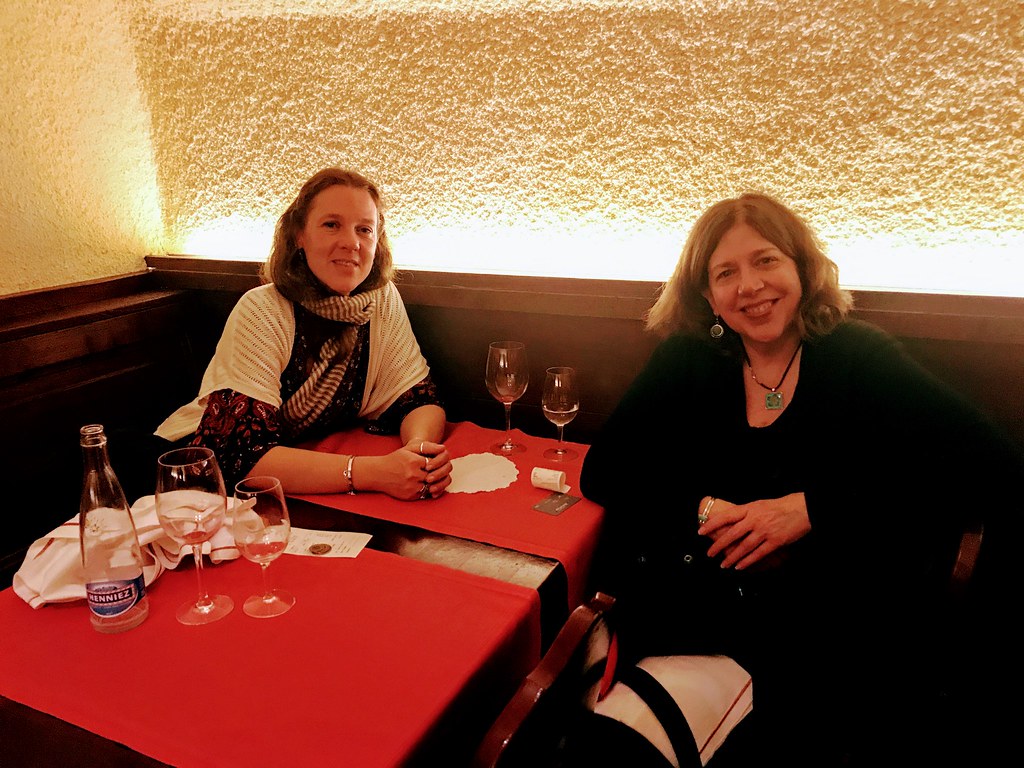 |
| Picture of Lia and “E” (Lois) at Les Armures. |
For most writers, experience plays a part in memory and invention. After seventeen years my little French was rusty, but it proved helpful in vital situations like ordering chocolates from the chocolatier or getting even more lost in Nina’s borrowed car in search of the local supermarket! Lia and I often reflected on how generous this opportunity was for artists, not only through the magnificent space of the Trélex residence but the openness with which Nina welcomes artists at all levels in their career. Nina’s passion to have her residencies be a place where artists can feel free to create without having to run through a gauntlet of qualifying barriers opens the window to a diversity of artists who long for a nest to birth and nurture their ideas. So do plan well since one can stay up to three months total. A minimum of a month would be a good measure of time to settle in, discover, create.
 |
| On the road to Raron. |
A couple of days after our excursion to Genève, we took the long ride east again this time traveling past Muzot and into the Swiss-German region of Raron, first mentioned in 1100 as Rarun. We were both surprised when our primitive French skills did not transfer to this new Swiss-German terrain. It was a pleasure to sense we had moved into another region of cultural discovery. Rilke chose one of the most beautiful vistas on earth to be buried. He loved the small village and the surrounding area where he could hike along the Rhone.
The village winds up a steep path toward the church and his place of burial. I wasn’t sure with my bad ankle if I could make it and had even checked in advance in case I needed a lift. There was one local taxi driver who would need to call the church for permission to drive up the pedestrian-only road but when I arrived I started the trek and made that pilgrimage one step at a time.
 |
| On the path to Raron. |
There is much to note of the experience, but I’ll leave that for poetry… Some things are still too raw, too intimate to share.
On the way back to Trélex, Lia and I returned to Muzot. I found I’d missed much on the first go as I was emotionally overwhelmed. The second run was a gift in terms of research and inspiration. It was also a time to be thankful. After an extraordinary few years of challenges we’d promised one another to mark our victory with a photo face down in the land. And so we did.
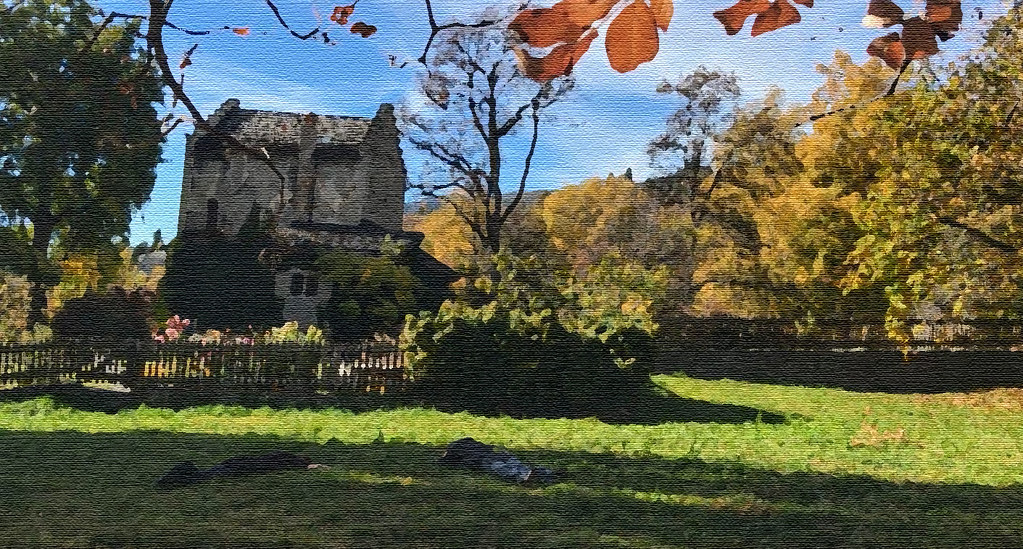 |
| Château de Muzot, Lia and Lois (“E”), October 2017 |
The Trélex residency turned out to be the perfect place to anchor my visit to both Geneva and the Valais region where Rilke lived and died. Both were in reasonable distance after all, a two-hour ride in Los Angeles is like a trip up to your neighbors in Santa Barbara. It may seem far for a local but nothing for someone who flew 6,000 miles to spend a little time with a dead poet.
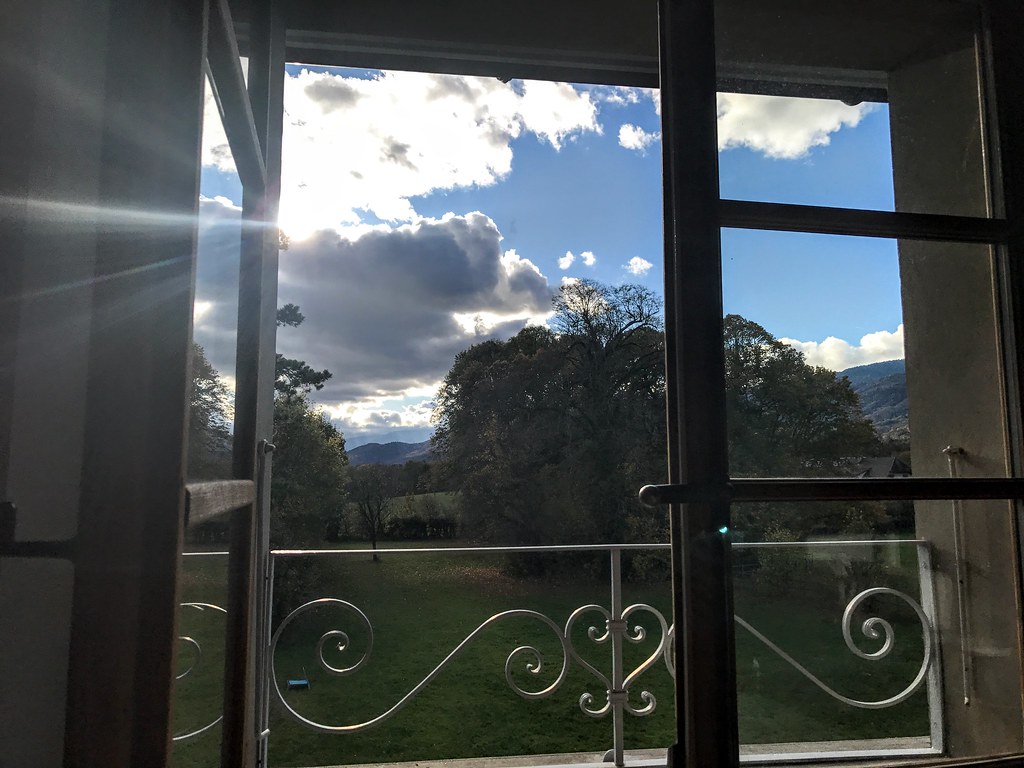 |
| A Trélex morning. |
After my return from Muzot and Raron I was so saturated with emotion I couldn’t take another event in. I was grateful to return to Trélex and spend time full tilt – headphones on, windows open and fingers to the keypad. I shed words and an unexpected number of tears. This was pure joy at having not only “met” my patron saint but at the Eureka opening to my project. It happened then as I wrote furiously, relieved I had finally found the best way in.
Part of this watershed involved barriers to places I had desperately wished to gain entry. It all came down to my conversation after seeing an older woman sweeping the steps at Muzot as we walked past Rilke’s house. Was this the madame whose ancestors bought Muzot for Rilke in 1921 and still owns it to this day? In those frozen moments I could not recall her surname! Madame Reinhart! Madame Reinhart! my mind called out but by then, the door to Muzot had been closed.
Later, I wrote the great granddaughter of a close friend of Rilke’s and told her of my anguish. She sagely replied – you were inside the house. The woman who saw you took you indoors and you wandered through every room. I realized once more that physical access was only one way to perceive. My wise correspondent had led me back to my original reflection and the idea that our presence leaves an imprint just as Rilke’s presence and work left his imprint at Muzot and in the hearts and minds of so many.
I thought of all the artists who’d looked out these same windows - the reflections of our every season, our every hour.
Trélex
for Nina
I want windows to tell me their secrets
so I don’t have to see everything
myself.
I want to know what winter gave when it settled in,
a goose for nesting,
a white nuthatch
on the bare cedar.
How many
have flashed by – starlings around the steeple
or swooped like the barn owl
with wings only the dead can hear.
Who did the window watch all day in the pine grove
until the cows were cutouts
and the night went black with crows.
Which one bent their head down and into the frame
chose stubble fields for a lost father.
How a photographer could strip the land
of everything
but the leaving.
Which throat ate the flame anyway
drank wine until the bottles chattered
their glass teeth.
Or the hands that knit the orange web
then strung it from tree to tree
spending yarn on a cool wind.
Who composed the song of the pear then hung it
from your note tree
to flutter at the slightest breath.
And when the wind flung the shutters open
who cried with joy
hearing the cows
and their chorus of wind chimes
ringing, ringing, the night.
 |
| Rilke’s sketch of Muzot, 1921. |
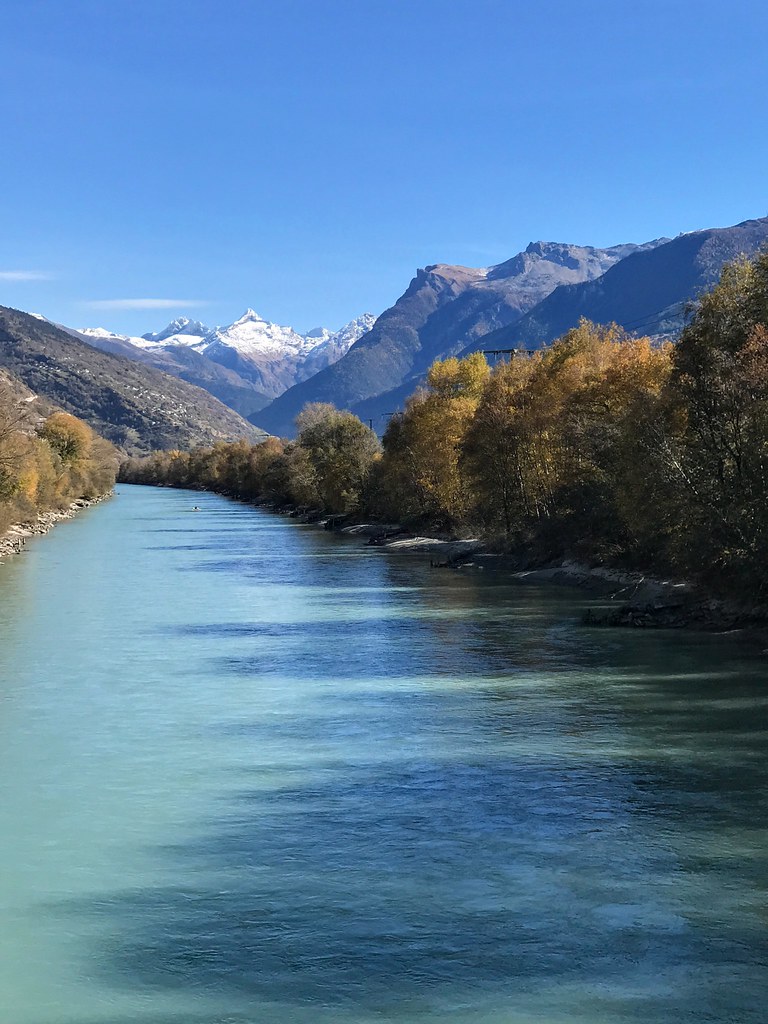
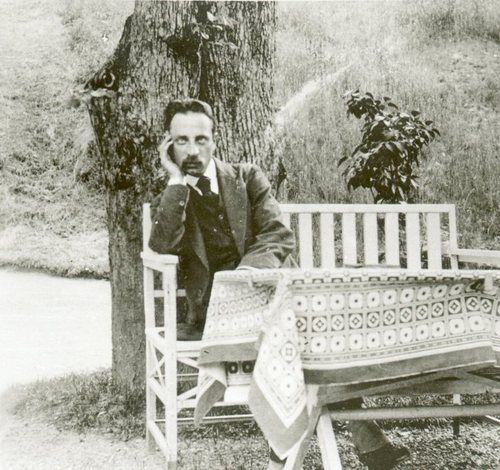
this musing reflects the way an artist can tap into the beauty of this country and other artists minds and ended up just now as "Reflecting an artistic pilgrimage to a land with profound beauty which those with the right artistic temperament can tap into to unlock mystical secrets and view life through a prism floating in space, roaming beyond borders, through old castle walls
ReplyDeleteand beyond painted glass to discover an ancient artist ruminating on existence in a cloistered hamlet overlooking a beautifully forbidding precipice from
which tender icicles of strange alienesque plant life form, connecting us to vortexes of imagination in a little music box, hidden under a train car in an abandoned forest of the mind…
Thank you....you have seen deeply into the tapping and heard the whispers through the walls -- are these long-gone spirits, is it the wind rustling the leaves or both? How art allows us to enter into the windows of one another to explore and bear witness. There are tender icicles here! There is music. Always music. Thank you Jazz Sonnet.
DeleteThis comment has been removed by a blog administrator.
ReplyDeleteThis comment has been removed by a blog administrator.
ReplyDeleteFinally got to read the blog and hear the cow bells. An ecstatic and moving prose poem of your experience. Love the poem also. You sent me to another place and it is wonderful. Thank you.
ReplyDeleteI love that you see it as a prose poem. Yes, one long and lyric prose poem. Thank you for walking through the pastures and for the listening...Alice.
DeleteThank you for taking me on this magical mystery journey. You captured all the beauty of Rilke's home, your experience, inner spirit, the connection you enjoyed with the countryside, people and reminiscing. Your words painted remarkable memories and were reflective of incredible wonder and wisdom. The photographs were brilliant.
ReplyDeleteThank YOU Tina. You know the genesis of these days. To share the full circle with you is part of the great gift. x
DeleteWonderful to gaze through the window with you, to an autumn land of vineyards, mountains, the whispering story of Rilke's past, the lights and sounds of night and day, and all at once glimpsing ourselves in the pane.
ReplyDeleteA post beautifully told.
It was quite a journey wasn't it? And in some ways...it's only just begun. Here's to windows, doors and all the pathways to friendship, poetry and oh Gamay! :D
ReplyDelete